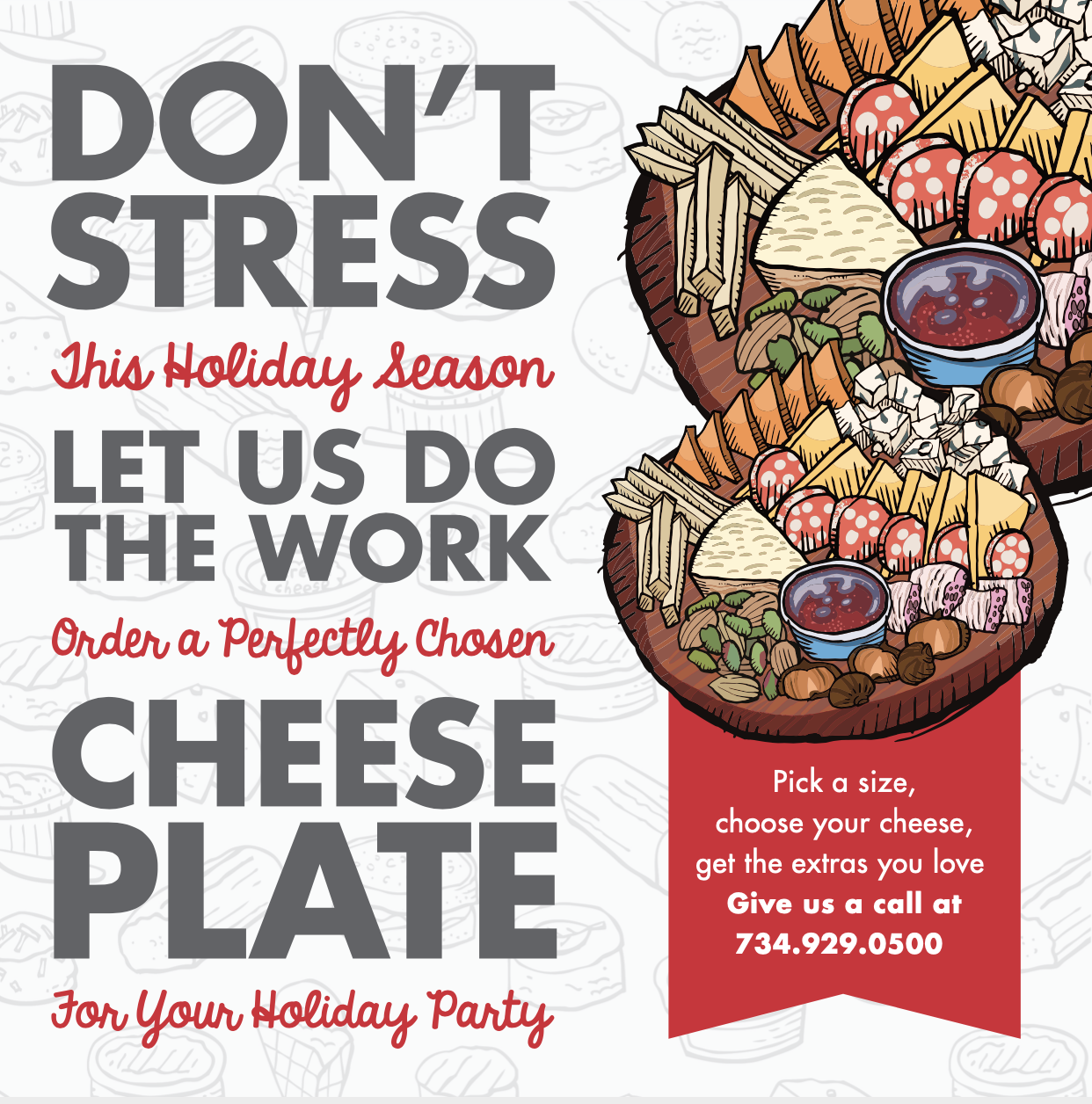Creamery Cheese Shop Manager and American Cheese Society Certified Cheese Professional (read more about that coveted designation here) Tessie Ives-Wilson is here to share tips to help you create the perfect cheese plate for any holiday party.
One of the most common requests for help I’ve gotten behind a cheese counter comes from folks who are entertaining friends and family and want to put together a cheese plate. When faced with a well-stocked cheese counter, the options can seem overwhelming, but a few simple guidelines will help narrow the field and let you pick the perfect cheeses for any crowd!
1. Know your audience!
Are your friends and family food adventurers or do they prefer the classics? Will this be an adults-only gathering or one filled with the giggles and joy of many generations? These questions can help you decide on the intensity of flavors that make up your cheese plate. A funky, washed-rind soft cheese might be perfect for an adults-only cocktail hour, but rejected by more conservative pallets as “too stinky”! When in doubt, I suggest having at least 1 or 2 cheeses in the mix that are easily recognized and have accessible flavors; a middle-aged gouda or cheddar will usually do the trick.
2. Know where and how the cheese will be served!
Is the cheese plate going to be the star of a course or part of a larger spread of food? Appetizer or dessert course? This set of questions can help narrow down how many cheeses to choose and how much cheese to get. Generally, if the cheese plate is going to be set out with lots of other dishes, I recommend keeping the number of cheese smaller, maybe 2-3, but with slightly larger portions that can be presented as full wedges, and your guests can serve themselves. However, if you are serving a plated cheese course, you might choose a few more cheeses, as many as 6 or 7, with slightly smaller portions, so that you can showcase a variety of flavors and textures.
3. Know your cheesemonger!
Whether it is at one of the Zingerman’s cheese counters, or another cheese shop, chances are, the people behind the counter spend much of their time tasting, talking about, and thinking about the cheeses that they serve. If you come to the counter armed with the information from tips 1 and 2, they can be your guide through the selection of cheeses they have to offer. They should also offer you tastes of the cheeses that you are interested in. If they don’t, it’s time to find a new cheese shop! Real, artisan cheeses will change with seasons, batches, and cheesemakers, so even if the cheese is one you have had before, it’s always good to taste to make sure that what is being offered is up to your standards.
Don’t have a great, local cheese shop? Still want more guidance? If you’re in the area, and you’d like to expand your cheese knowledge, join us for Cheeseboard Essentials on November 16 from 3-5 pm or November 22 from 6:30-8:30 pm.

